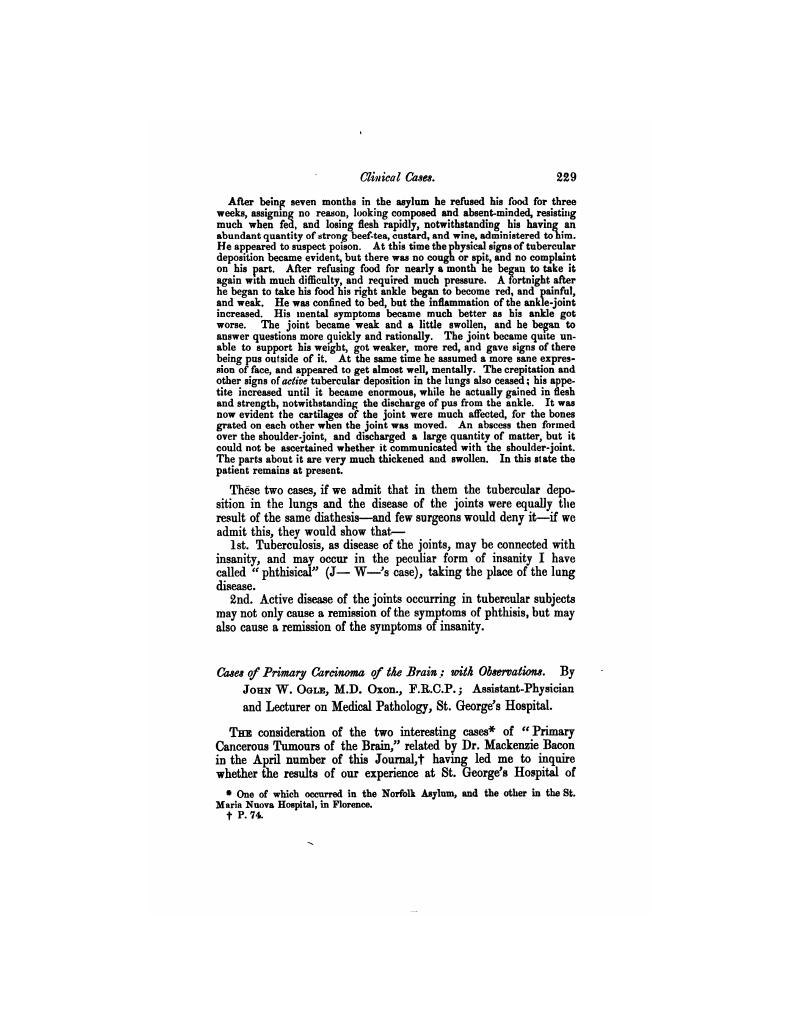No CrossRef data available.
Published online by Cambridge University Press: 19 February 2018

∗ One of which occurred in the Norfolk Asylum, and the other in the St. Maria Nuova Hospital, in Florence.Google Scholar
† p. 74.Google Scholar
∗ I am naturally only here concerned with such cases as have died and been examined, post-mortem, within our walls, as all others must (by reason of the difficulty during life, of diagnosing intra-cranial tumours of any kind, and à priori, of diagnosing cancerous growths) be excluded from present consideration.Google Scholar
† Tumours of the spinal cord, and their membranes, have not been considered in this enumeration.Google Scholar
∗ See. ‘Hospital Post-mortem Book,’ 1844, No. 210.Google Scholar
† Ibid., 1845, p. 32.Google Scholar
∗ See ‘Hospital Post-mortem Book,’ 1846, p. 65.Google Scholar
† Ibid., 1846, p. 20.Google Scholar
∗ See ‘Hospital Post-mortem Book,’ 1850, p. 157.Google Scholar
∗ See ‘Hospital Post-mortem Book,’ 1855, No. 172.Google Scholar
∗ See ‘Hospital Post-mortem Book,’ 1862, p. 121.Google Scholar
† Ibid., 1859, No. 202.Google Scholar
∗ See ‘Hospital Post-mortem Book,’ 1860, p. 312.Google Scholar
∗ Sec ‘Hospital Post-mortem Book,’ 1863, p. 229.Google Scholar
∗ I allude here, of course, to the spasms, cramps, pains, and morbid sensations which so often exist in the muscles of the legs and arms, and sometimes the back, in disease of the structure of the cord.Google Scholar
∗ See ‘Hospital Poet-mortem Book,’ 1841, p. 66.Google Scholar
∗ See ‘Hospital Post-mortem Book,’ 1843, p. 49.Google Scholar
† Unfortunately there is no description of the details of this case in our records, so that it cannot be said whether paralytic or other symptoms existed.Google Scholar
‡ See ‘Hospital Post-mortem Book,’ 1843, p. 83.Google Scholar
∗ See ‘Hospital Pathological Catalogue,’ series viii, No. 43.Google Scholar
eLetters
No eLetters have been published for this article.